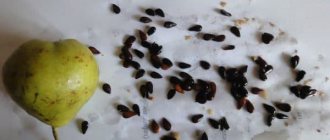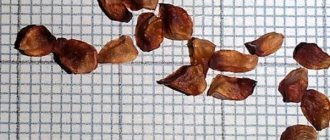When to replant
Many sources claim that the flower of male happiness should be replanted in the spring. What to do if the plant is sick? Therefore, we replant our male flower as needed. Transplanting and propagating anthurium are two different things. We replant the newly acquired plant after a few days. This will allow him to get used to your home conditions. And adapt to the new growing environment. I don’t see the point in waiting for spring; if necessary, we take and replant the anthurium at home ourselves. Let's take a look at the circumstances below:
- – replacing the soil with a more nutritious one
- – rejuvenation of anthurium
- - dividing the bush
- – treatment and preventive measures
Secrets of proper plant transplantation
When purchasing an anthurium, it is worth remembering that it is better to immediately transplant the plant into a new pot: this will help you understand the condition of the roots, as well as replace the soil with a better one.
The plant is replanted in the following cases:
- It is recommended to replant young anthuriums once a year, older ones - once every 3-4 years;
- if a rusty or white coating appears on the surface of the earth, which indicates depletion of the soil;
- if it becomes noticeable that the pot for the plant is too small;
- if the plant is sick, to examine the roots and replace the soil with fresher and healthier soil.
Which pot to choose for anthurium
Since the roots of “male happiness” grow more to the sides rather than down, it is better to choose a wide container for transplantation so that moisture does not stagnate.
It is important to choose the right pot size - if it is too large, pathogenic organisms will develop in the ground.
By the way, the future result depends on its size: if you want to propagate the plant, then it is better to choose a wider one - then the anthurium will grow well and form children, but it will bloom worse. It has been noticed that in a cramped space, “male happiness” blooms better. In this case, when replanting, you should select a container that is not much larger than the previous one. So, a container with a width of 25–35 cm in diameter is suitable for an adult anthurium. Speaking of material, it is worth purchasing a plastic pot - this will help create a normal temperature regime.
If you have to replant a plant into a previously used pot, be sure to treat it with boiling water or a solution of potassium permanganate
What kind of soil is needed
Choosing the right soil for anthurium is an important task. A simple solution is to buy a special substrate for flowering plants (for example, aroids, bromeliads, and orchids): it has excellent air permeability and low acidity (pH-5.5–6.5). Visually, it should be loose and fibrous.
How to replant after purchase
After you have purchased the plant. You should inspect the root system and appearance of the plant. Of course, this needs to be done immediately in the store, but you may not notice. At home we inspect the plant for diseases of the roots and leaves. To do this, carefully remove the plant from the planting pot. We examine the roots of the plant. If they are good and there is no rot or damage. We carefully put it back in and take care of it for a couple of days. If there is damage to roots or leaves. Then we transplant the plant immediately. All rotten roots must be removed with a knife or scissors, as well as damaged leaves. Treat with appropriate medications. This can be phytosporin, zircon, epin. Then we take the plant and carefully free it from the planting soil. Where it was sold. We straighten the roots and carefully plant them in the prepared pot. We put it in a permanent place and take care of it.
Transshipment
The most gentle transfer is transshipment. In this case, the earthen lump is not destroyed, but is carefully moved into a large container. This way you can even replant a flowering anthurium. It is done if:
- you performed the previous transplant yourself;
- the plant is healthy;
- substrate without plaque or musty odor;
- roots are in satisfactory condition.
For this:
- Take a pot with a diameter several centimeters larger than the previous one.
- Fill 1/4 full with drainage.
- Add 2-3 cm of substrate.
- Place an earthen ball in the middle.
- Gently add soil from the sides, tapping the bottom on the table.
- Gently press the substrate with your fingers.
- Mulch the surface with sphagnum.
- After 3-4 hours, water.
How to transplant correctly
So, in order for you to transplant correctly. We need to prepare: for this we need a new pot, expanded clay, perlite or vermiculite, new soil for the plant and the plant itself.
Let's look at anthurium transplantation as an example:
- Carefully remove the plant from the old pot. We try not to damage the roots. They are very fragile. If your plant is overgrown and difficult to remove from the pot. You need to water it generously. And carefully take it out. For transplantation we will need: soil, preparations, a new pot.
- We inspect the root system for damage or disease. I usually treat the roots with root.
- We take a pot according to the size we need. Be sure to lay expanded clay on the bottom. So that the bottom and drainage holes are covered with a layer of expanded clay. It is better to take both small and large. Fill the bottom with expanded clay - about two or three scoops of soil. The pot should have good drainage holes.
- We prepare the soil separately. You can prepare it yourself or mix ready-made soil.
- First, pour a little soil into the pot and try on the plant. It should be at the same level as it grew before in the old pot. To do this, the plant can be placed in the center and the desired level can be determined.
- Gently add soil to the sides of the pot. Lightly compacting it with your hands. Be careful not to damage the roots. You can lay sphagnum on top. The soil layer should not exceed the level that was previously.
- After planting, water the plant generously. The loose soil will settle and more soil can be added if necessary.
We put the plant in its original place. And we carefully care for flowers at home. At first, the plant will experience stress. Therefore, special preparations for watering will help it survive the transplant. This way you can replant your anthurium without difficulty. It can also be propagated by transplantation. Good luck to you.
Reproduction methods at home
How does Anthurium reproduce? The main methods of propagating this flower at home are the same as for other crops - propagation by seeds, leaves, cuttings, dividing the bush, side shoots or aerial roots.
Seeds
Anthurium berries
Seeds purchased in a store are soaked in water for two hours, the seeds are slightly pressed into specially prepared light soil (it is possible to use sphagnum moss), the substrate is moistened and covered with glass or film. At a comfortable temperature, the first shoots appear after 14 days . The seeds drop when the first true leaf appears in the soil, similar to the mixture for adult plants. As the seedling grows, it is transplanted into a larger pot. The soil is transferred from a smaller to a larger pot without disturbing the root system.
Before planting, Anthurium grains are treated with a 0.1 percent solution of potassium permanganate
Propagation from the seeds of your adult plant is a complex and lengthy procedure. Flowers are artificially pollinated, seeds ripen in 9-12 months . Ripe seeds are immediately planted in the ground, having previously been cleared of pulp. Propagation of hybrids by seeds can lead to the loss of the unique characteristics of the plant, so seeds are used that do not lose their species characteristics.
Some seeds will not sprout, some seedlings will die, and the first adult leaf will not bloom. Propagation by seeds is the longest way to grow an adult plant.
Cuttings and dividing the bush
The fastest and easiest way to propagate is by cuttings and dividing an adult plant . The fastest way to get a strong adult plant that can bloom soon. In this case, the shoots will repeat the features of the parent crop; this is important if you need to get offspring from a hybrid.
Stem cuttings, 5-8 cm long, are separated from the adult plant, the cut is dried and placed in water or sphagnum moss . They quickly take root, after two weeks the cuttings are planted in the ground, and after another month the anthurium will begin to grow.
Side shoots
In an adult plant, many offspring appear on the sides, which are carefully separated from the mother during transplantation. It is not recommended to pull shoots out of the ground; there is a high risk of damaging the root system , then the sprout will take a long time and be reluctant to take root. The separated cutting is placed in water or substrate, where it is moistened as it dries. Within a month, the sprout is ready for planting in a permanent place.
Aerial roots
Aerial roots on Anthurium
Aerial roots allow you to receive additional nutrition and moisture from the air, as well as more firmly attach to the soil surface. The cutting with aerial roots is ready for planting in the substrate . The cut is kept in air for two hours and dipped in coal chips and dropped into the mail. The soil should be slightly moist, you can use a spray bottle.
Leaf
Representatives of this family almost never form roots on the leaves. Almost always this method ends in leaf rotting. You can try not to put the leaves in water, but to dig them into a moistened substrate. There are few guarantees to grow an adult plant , so it is better to turn to other methods of propagation.











